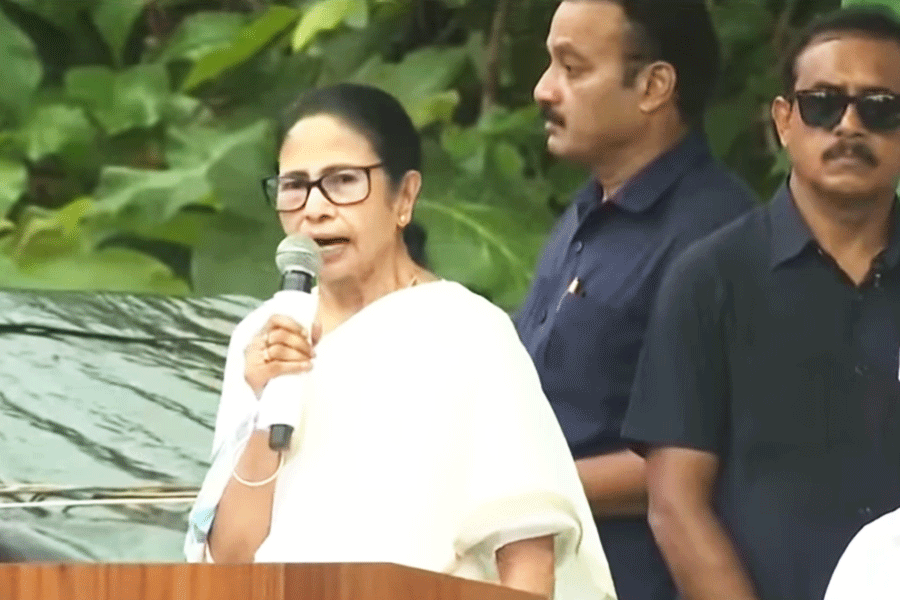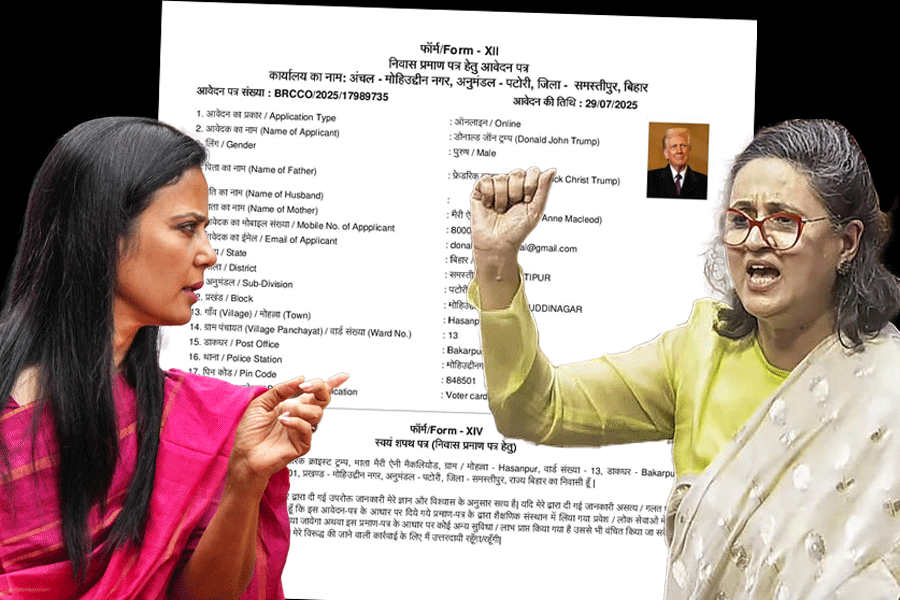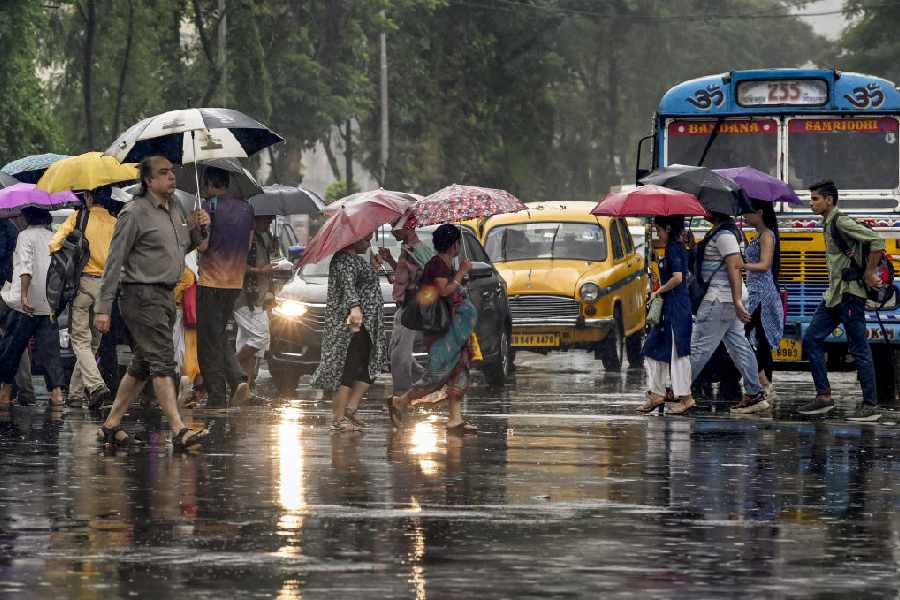

Pic: Subhendu Chaki


Pic: Subhendu Chaki

Hilsa: The Future’s History
Bengalis love their ilish; but their whetted lust for it might be driving the prized fish to extinction, says Amitangshu Acharya

In 1894, a lighthouse keeper called David Lyall landed in the uninhabited Stephens Island off the southern coast of New Zealand with his pet cat, Tibbles. The cat soon spotted the hapless Stephens Island wren, the last of their species, still surviving on the island. For the small, flightless and nocturnal bird, karma was a cat. Within a year, Tibbles had hunted the wrens to extinction.
A similar kind of genocide is taking place in India. The Hilsa or Tenualosa ilisha, as it is scientifically known, is fast disappearing from the Ganga and its distributaries. The government of West Bengal, the state where the maximum catch and sale of Hilsa takes place, reported that catch has declined by a staggering 90 per cent — from almost 80,000 tonnes in 2001 to 1,000 tonnes in 2014.
Unfortunately, this massacre is being credited largely to the community that forms the Hilsa’s biggest fan base, that is, Bengalis. Perhaps no other community in India is defined by its love for a specific fish. However, the sharp decline in Hilsa population is a story of a fascinating love affair fast approaching a tragic end.
With mustard on their plate, and nostalgia on their palate, Bengalis are eating the Gangetic Hilsa to extinction.
Which is odd, given the intense chemistry between fish and foe, which is forged by nature as much as culture. This silvery fish lives in the Indian and the Pacific oceans, but the urge to breed in sweet water, heralded by the southwest monsoon, drives a large number of them into the Bay of Bengal. From there, they swim up in the sweet and food-rich freshwaters of the Ganga and its distributaries, feeding and spawning for a year, and finally return to the salty seas. Their one-year sojourn in the Hooghly-Bhagirathi river system in India, and the Padma in Bangladesh, has embedded them permanently in Bengali culture.
Since 1916, Bengali children have grown up with a poignant rendering of Hilsa in the monsoons by Satyendranath Dutta — first lines of which invoke nostalgia across generations:
Ilshe guri, ilshe guri, ilish maacher deem
Ilshe guri ilshe guri, deener belay heem
The metaphor of Hilsa eggs (ilshe guri) with its fine granules is used to describe a cold, light monsoon rain — characterised by small droplets. This rain was supposed to bring the Hilsa to the river surface, where it could be fished easily. The term has gained a foothold in everyday language to describe light, ephemeral rain.
Hilsa is also a part of Bengali rituals, such as biyer totto — gift to the bridegroom from the bride’s family — where including Hilsa is seen as a mark of status. The other — Jamai Shasthi, a ritual whose sole aim is to pamper the son-in-law with culinary delights — includes Hilsa as a mandatory item.
The distinct taste of the Hilsa, which is a frequent topic of discussion at Bengali dinner tables, is acquired from the complex chemistry of fat produced and processed in the fish in order to make the journey from the sea to the river possible. Pritha Sen, noted food historian, says she was blown away by the taste of the Padma Hilsa, partly because of the extra fat in the Bangladeshi variant as compared to the Indian one.
Bengalis have mastered the art of cooking the fish, prominent amongst which is the paturi — where the Hilsa is wrapped in a banana leaf and steamed with mustard and posto (poppy seeds) — and the gravy (jhol). “Paturi was a classic form of energy conservation, where by placing the wrapped fish in a pot where rice was being cooked, you could get two dishes at the same time,” says Sen. “In fact, there was a practice in East Bengal of cooking Hilsa by stuffing it inside an empty coconut shell and leaving the shell inside the embers of an earthen oven, where it would get slow-cooked in the residual heat.”
Pritha credits such innovations to the uncertain terrain of East Bengal, which remains prone to frequent natural disasters. The salted and sun-dried nona ilish also used to be popular with East Bengalis in Calcutta. Its very mention evokes nostalgia of the intensely smelly dry-fish market of Baithakkhana Bazaar in Sealdah, where every possible fish species in the Ganga is mummified and put on display.
The romance may soon come to an end. A report submitted by a consortium of seven Indian Institute of Technology (IITs) to the Ministry of Environment and Forests in 2012 calculated that the total catchable potential for Hilsa had already been exhausted. The biggest threat for the Hilsa, as scientists more or less seem to agree, is the the bumper-to-bumper traffic of dams on the Ganga, especially the Farakka Barrage, which has impaired fish movement.
Massive over-fishing in the Bay of Bengal region has been identified as a key reason contributing to rapid decline of Hilsa populations. Almost half a million metric tons of Hilsa is caught every year in Bangladesh and India. And yet, consuming Hilsa beyond nature’s capacity to replenish its stocks has never been part of Bengali tradition. Satyendranath Dutta’s poem talks about the joys of catching Hilsa in the rains, which is when Bengalis generally consumed the fish. Customers would apply thumb rules to ensure that the taste of the fish would not get compromised. A juvenile Hilsa (khoka) was rarely purchased for it was supposed to lack taste. A pregnant Hilsa was also not known to tickle the tastebuds. And then there was the tradition in Bengal of keeping the Hilsa off the menu between Lakshmi Puja (mid- to end-October) and Saraswati Puja (early to mid-February). All this allowed pregnant fish to spawn, and juvenile fish to mature and head back to the sea.
The present is a break from the good sustainability practices of the past. The demand for Hilsa is pushing poor fishermen to empty out the rivers of just born, juvenile, pregnant — in a nutshell, whatever — Hilsa they can find. Every year, over eighty million juvenile Hilsa are caught and sold from the Hooghly alone. A consumer chain is eating through the Hilsa across its birth cycle. While the rich can afford the mature fish weighing near and above a kilogram, middle classes are buying the affordable juveniles, which weigh between 300 and 400 grams. The poor are consuming baby Hilsa fish, weighing as low as 15-20 grams, which is being sold as Khoira, a variety of small fish.
As the stocks plunge, the number of Hilsa festivals in Calcutta is on the rise. Celebrity chefs try new recipes, and with Hilsa sushi and biryani doing the rounds, Bengalis want to eat their Hilsa and have it too. Frozen and packed Hilsas now follow the migrant Bengali across the world and appear in hypermarkets from Bangalore to London, New York to Sydney. Pritha Sen, who also runs a popular restaurant in Goa, believes celebrities and restaurateurs are fuelling a hysteria that is endangering the fish further. “I have made it a point not to buy any juvenile Hilsa for my restaurant, even if customer demand is high... We have to respect the fish,” she says.
If there is good news anywhere, it is only across the border. Bangladesh has taken serious steps to ban fishing of Hilsa in different seasons in different places. Since 2012, it also banned export of the prized Padma Hilsa to India in order to maintain stocks. The Prime Minister of Bangladesh, Sheikh Hasina, in a signal to her citizenry has publicly declared she’d keep Hilsa off her table on Poila Baisakh, the Bengali New Year.
On this side of the barbed wire, no such restraint; taste buds have loosened purse strings. Without batting an eyelid, Calcutta’s upper middle class bought a kilogram of Hilsa at an astronomical price of Rs 2,000 and above a kilo for Jamai Shasthi. A study by the International Union for Conservation of Nature predicts that if capture of juvenile Hilsa is reduced by 50 per cent it can potentially increase adult fish catch by about 10 per cent. But, instead of curbing demand and controlling overfishing, both the central and state governments are pumping money into research for farming Hilsa in ponds. So far the project and its results are shrouded in secrecy. Given the preference for its specific taste which is produced by the complex chemistry of salt and sweet water, it is doubtful that farmed Hilsa will pass the litmus test of Bengali taste buds.
The sturgeon fish, coveted for its eggs, known in the luxury market as caviar, has nearly been fished to extinction in the Danube in Europe. With their mindless consumption, Bengalis are playing a similar Russian roulette with nature. Unless corrective policies are urgently enforced, and consumer awareness increased, the Bengali community will be remembered in history as copycat to another extinction. Like Tibbles.
Amitangshu Acharya researches the politics of water, technology and consumption at the University of Edinburgh, UK
Catch as catch can
Reporting from ground zero, Moumita Chaudhuri fishes out the same warning on ilish — this plenty smells of looming poverty

Kole Market is located bang opposite Sealdah railway station. It is a wholesale market for fish and vegetables, the only market of its size in the city apart from the one at Howrah.
Not for it the iambic drawl of the local baajar. Stroll, explore, look, compare, haggle, digress... Kole Market is all about speed and business.
Labourers download basket after basket of fish from trucks. Men in vests and lungis slice huge slabs of ice with wooden and metal rods. Auctioneers cry themselves hoarse. There is a persistent hum in the air, as if a giant swarm of bees were at work.
The semi-closed market space is punctuated with low watt bulbs swinging from a tangle of electric and nylon wires like trapeze artists. Except for the mobile clock and slices of the pinking sky, there is no way of telling that it is 5.30 in the morning.
Every other wholesaler has two counters — one for the Hilsa, and the other for everything else (Pabda, Lote, Chingri). The cleave is true of the Bengali’s palate and plate. Hilsa is a class apart.
No sooner than the fish are spread out, huddles invite themselves. Groups of 15 to 20 crowd around a wholesaler. One of a group — a potential buyer — breaks out inevitably, picks a basket and quotes a price. Next, a voice soars several decibels over the hum. A man clambers on top of a mountain of empty trays, points at a basket of fish, and starts calling out the bids. “Chho sho, chho sho, chho sho…” The auction begins.
Earlier, the wholesalers would buy fish off trawlers. But those who operated trawlers were no salesmen, and the fish were sold at throwaway prices. Then, a few years ago, trawler-owners decided to cut their losses and sell fish through middlemen.
It made sense. After all, they are the ones who pay the fishermen to go to sea, park their trawlers on the waves until they are full. The wholesalers have to make do with a five per cent commission.
The smallest “lot” up for auction weighs five kilograms. The biggest, 20, even 25. The light pours down from the bulb onto the Hilsa. It looks like pirates’ loot.
But what is this? These are mite-sized fish. Only slightly bigger than the Pabda.
“This is not bad at all. A fish that weighs above 800 grams is considered a prize catch these days,” says Ashok Ray, a wholesaler at Kole Market, as he transfers fish from his wicker basket to a scarlet poly tray.
“Fishermen catch Hilsa before they can grow to full size,” explains the tradesman, one of many who bring their catch from Bakkhali, Canning, Diamond Harbour, Frazerganj and Digha. These areas are places where the Hilsa, coming in from the sea, lays eggs. Fishermen are not supposed to fish in these areas before the monsoons.
A Hilsa needs a minimum of three years to grow to the size of a kilo and more, and to taste as it should — divine.
The country’s first and only Hilsa Conservation and Research Centre has come up in Diamond Harbour to look out for the Hilsa. A lot of conservation efforts — awareness programmes, camps, radio talks, stakeholders’ engagements — have been floated by the state government through this centre. Some of the other initiatives involve sensitising school children, printing brochures, putting up pro conservation banners along the highways.
According to an officer from the West Bengal fisheries department, who is also associated with the Hilsa Centre, fishing of juvenile Hilsa has been banned in the state’s “Hilsa zone”.
The Hilsa zone is a 523-kilometre stretch on either side of the Hooghly. It comprises nine districts — Malda, Murshidabad, East Midnapore, Nadia, Hooghly, Howrah, Burdwan and North and South 24 Parganas.
But despite the ban, juvenile Hilsa or khoka ilish abounds in the market.
“This year, I was stunned to find Hilsa of about 200-250 grams in the market. Those who cannot afford bigger varieties are happy to get a taste of Hilsa, big or small,” says Anwar Maqsood of Naaz Fish, a wholesale outfit in Howrah market.
Even in Diamond Harbour, which is a major Hilsa hub, people — small-time fishmongers or individuals — buy small-sized Hilsa straight off the trawlers. “At the market, here, unlike Kole or Howrah markets, Hilsa is not sorted by size before auction,” says Jagannath Sarkar, secretary of the Diamond Harbour fish market. “There is another difference. Here, it is all fresh fish. No frozen Hilsa,” he adds.
Good-sized Hilsa usually wind up at the cold storage. It can stay “fresh”, in cold storage, up to five years, but it costs more. “The price triples,” says Ray. It is not feasible to store small quantities in deep-freeze facilities. It pays only to store at least 30 to 40 kilos of Hilsa. “The trawlers which came in June did have a few big Hilsa. But they have all been kept in the cold storage at minus 40º centigrade,” he adds. These fish rise to the market on special occasions — Ranna Puja, Durga Puja — when courtesy the generous spirit, the purse strings come undone.
In the last five years, the price of Hilsa has gone up, up, up, way beyond even its notional value. So, a regular, most commonplace Hilsa weighing 500 grams will cost Rs 500 plus in the wholesale market, which works out to hundred rupees per 100 grams.
Till 2012, Maqsood used to get his Hilsa from Bangladesh. But after the ban kicked in, he had to make other arrangements. He says, “These days we import fish from Myanmar. This spikes the cost. From Bangladesh we used to get fresh catch, but from Myanmar it comes all frozen.”
Fish from Myanmar, however, have the same taste as the fabled “Padmar ilish”, since both are sourced from the Irrawaddy. Adds Maqsood, “We also get fish from Gujarat and Maharashtra. These look exactly the same, but do not taste as good as the ones from the Bay of Bengal.”
Well, some Hilsa is better than no Hilsa. But no Hilsa may not be far.










